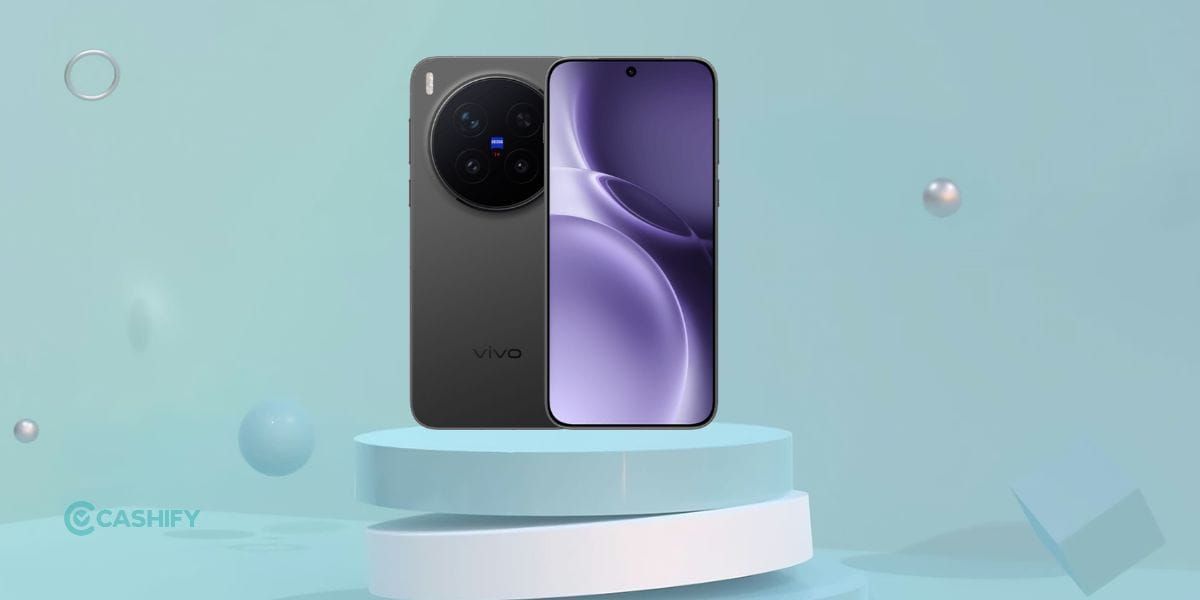Introduction
M series Samsung Galaxy phones have been a massive success in the Indian market. The Galaxy M20 has become the most valuable budget phone from the Korean giant, answering the incredible value proposition offered by Chinese manufacturer Xiaomi with a large battery (5,000mAh) that was seen in the Galaxy M20 as one of its key features. Later, Samsung unveiled the Galaxy M30, bringing two updates on the Galaxy M20, including a super-AMOLED display and an extra rear camera.
The Galaxy M30s has been launched as an upgrade to the Galaxy M30. Samsung is once again focusing on battery capacity. The other feature of the M30s is the 48 MP primary rear camera. This is almost 5 times the number of megapixels compared to the M30, even more than the Galaxy A70.
Does the Galaxy M30s offer enough improvements than the Galaxy M30? Is this a good alternative for other Galaxy phones with almost the same price tag as the Galaxy A50 or Galaxy M40? Let’s find out.
(Psst.. click here if you’re looking to exchange your old phone for this!)
Princes in India, Variants, Availability
The 4GB RAM and 64GB storage variant is priced at Rs. 13,999. The top-end model with 6GB RAM and 128GB storage variant is priced at Rs 16,999. The colour options you get here are Pearl White, Opal Black and Sapphire Blue.
Box Contents
M30s comes in a subtle box. Unfortunately, Samsung doesn’t add headphones or case cover in the Galaxy M30 box. All the stuff you get in the box:
- Samsung Galaxy M30s
- Sim ejector
- 2-pin 15W power adapter
- USB Type-C Cable
- Quick Start Guide and Warranty information
Specs at a glance
- Display: 6.4-inch Super AMOLED Infinity-U display
- CPU: Exynos 9611, Octa-core (4×2.3 GHz Cortex-A73 & 4×1.7 GHz Cortex-A53)
- GPU: Mali-G72
- Memory: 64GB 4GB RAM, 128GB 6GB RAM, microSD, up to 1 TB (dedicated slot)
- Rear Camera: Triple, 48 MP, f/2.0, (wide), 1/2″, 0.8µm, PDAF, 8 MP, f/2.2, 12mm (ultrawide), 5 MP, f/2.2, depth sensor
- Selfie Camera: 16 MP, f/2.0
- Battery: 6000 mAh, 15W fast charging
- Security: Face Unlock and Fingerprint (rear-mounted)
Design and Build Quality
For the Galaxy M30S design, Samsung has changed a bit for the rear panel. Like the Galaxy M30, the rear has a two-tone gradient end, but the M30S rear panel changes colour around the bottom of the phone, with 70:30 vertical partitions. The blue variant that Samsung sent us looked green on the sides, and the company added a few small drops of glitter which shine when the light strikes. The shimmer doesn’t look appealing.
Another design change is the replacement of rear camera sensors and LED flash. Flash is now out for cameras, and on the right side of the sensor, there is a text called ’48 megapixels’. Samsung has taken notes from Huawei here as the Chinese OEM makes it a point to mention things like ‘AI Camera’ beside the camera assembly on its phones. Samsung has opted for a better approach, though by using a smaller and thin font. The triple camera setup is so good that it lets you ignore the texts written.
Display
The Galaxy M30 has a 6.4-inch Infinity-U Super AMOLED display similar to the Galaxy M30. The panel hasn’t changed, and since it’s a Super AMOLED panel, the M30S display looks pretty fantastic. Display mode is set to natural out of the box, so the colours don’t come out too bright as on the M30, but you can turn it off from the display settings. The brightness levels are high and even with the full power of the sun on my phone, we had no issues with resolution.
The size of the bezel does not change. The bezel at the bottom is twice as thick as the top and side bezel, and we wish Samsung had tried to do something about it. Since the M30S is launching a month or so after the Galaxy Note 10, we did not expect the asymmetrical bezels. But we feel the company has just taken the Galaxy M30 and made some minor changes to make the M30S, so fewer complaints about that. The teardrop notch above does not distract you at all, and you tend to ignore it in everyday use.
Performance
The Exynos 9611, which powers the Galaxy M30, has four 2.3GHz Cortex-A73 cores for on-demand work, four 1.74GHz Cortex-A53 cores for general use, and the Mali-G72 MP3 GPU same as in the Galaxy A50. Unfortunately, while the specs in the SoC are good on paper, the performance of the M30S leaves much to be desired.
We saw a noticeable lag when switching between apps, and Google apps also suffered from stuttering. With a chip like the Exynos 9610/9611, it is unfortunate that Samsung did not optimize the software here in 2019 for its budget phones. As we point out, the Snapdragon chips in the same segment work very well on Galaxy phones, and we’d like Samsung to stop using its Exynos chips, which means the company will have to price their smartphones a little higher.
The Galaxy A50 faces similar performance issues in everyday use, but it handles gaming with a lot more ease and is the same as the Galaxy M30S. Games like Modern Combat 5 and Clash of Clans run smoothly, just like other lightweight games with less complicated graphics. PUBG also runs well as long as you adhere to the default graphics settings. The phone warms up a bit with lengthy gaming sessions, but that’s never a problem.
Software
The Galaxy M30s run on Android with a Samsung One UI 1.5 interface like the Galaxy Note 10. However, as with other M series phones, the M30S offer minimal features. There is no Bixby voice, Bixby routines or Windows link from the Galaxy Note 10. Unlike the Galaxy A50s, it has no Samsung Pay. Unlike other M series phones, the M30S come with some basic tools common to high-end Galaxy phones, such as the Smart Capture feature that lets you take multi-page screenshots.
The Galaxy M30s also comes with the Game Booster, an upgraded version of the Samsung Game Tools, which debuted on Note 10. The game booster has similar functionality – recording video and taking screenshots, blocking notifications for incoming calls, and turning off auto-brightness. But it adds two critical functions: measuring the device temperature and how much battery time you have to play the game.
System-wide night mode, blue light filter, always-on display, facial recognition, themes, digital wellbeing and motion gestures such as lift-to-wake and double-tap-to-wake screen are included, but that’s about it.
Maybe, Android 10 will add on some new features to the device, but we will have to wait for some time until it’s officially announced. Yes, the Galaxy M30s will get Android 10 and most likely Android 11 as well, because Samsung provided two major OS upgrades to all of its old Galaxy J series phones also.
Cameras
The Galaxy M30s has a 48MP primary camera, along with 8MP ultra-wide and 5MP depth cameras. The camera uses pixel binning to create 12-megapixel photos by default, so you can’t get 48MP files. And the results are excellent. The brightly lit parts of the camera scene are overpowering, so the details in daytime shots are impressive. Images lose detail in low-light conditions, but the M30s take brighter night images than the Galaxy M30 can handle with its 13MP rear camera.
There is a dedicated Night Mode that brightens the scene, but it does not seem to add any details and overexposes much of the light sources. Night mode images also cut the image a bit, and there is no option to take night mode images with an ultra-wide lens, the feature that you find only in flagship galaxies.
The ultra-wide photos taken during the day are not very detailed, and nothing has changed here compared to the Galaxy M30 or Galaxy M40. Samsung still sticks to the 8-megapixel ultra-wide sensor with f2.2 aperture, which is only good enough to fit in one scene and doesn’t win rewards for image quality. As far as bokeh pictures with Live Focus mode are concerned, the background separation is perfect in the right light conditions, and you get new blur effects from the Galaxy S10 and Note 10 series. The colour point, which turns the background into black and white, is beautiful.
The Galaxy M30 uses ultra-wide cameras to record videos like action camera, along with many other camera features such as AR emoji, Super Slow-Mo video recording, Regular Slow Motion Mode and Super Steady Mode.
The M30S 16-megapixel front camera is unchanged from the Galaxy M30. Selfies are in reasonable detail, and the camera also manages to capture realistic skin tones, at least outdoors during the day. At night, selfies are overexposed, and you lose many details, and the noise can also increase. You can take live focus selfies, and the background separation of these is excellent.
Battery Life
For a budget / low-to-mid-range phone with a 6,000mAh battery, you would expect the Galaxy M30s to have a record-breaking battery life, but that’s not exactly the case. It should be noted that while the M30S has a 1,000 mAh larger battery than the Galaxy M20 and Galaxy M30, it also has a more power-hungry demanding processor inside. Where the Exynos 7904 in the M20 and M30 has two high-performance processor cores and six capacity cores, the Exynos 9611 has four high-performance cores and is, therefore, less economical.
We are saying this because we don’t see much better battery life than the Galaxy M20 or M30. M30S will last you at least a day no matter how heavy you use it but don’t expect to have two days with the same charge for anything other than light use, especially when the display is always enabled and two SIM cards are active at all times. Always turn off the display and improve endurance.
Audio and Security
The Galaxy M30s has a single bottom-firing loudspeaker, which does not distort at full volume, but could be better with a bit more bass. It should be even louder. It fits a small room, but not in your living room.
For security, Samsung has included a face unlock feature. It performs well but can struggle a bit in low light. There is also an old-school fingerprint sensor on the back of the phone, if you want added security.
Pros & Cons
PROS:
Crisp AMOLED display
Great battery life
Decent performance
Good camera performance in daylight
CONS:
Camera is slow to focus
Bloatware
No earphones in the box
Although you can find features like the Super AMOLED display and 48MP triple rear camera on many other smartphones at this price point, what sets the M30s apart from others is its 6,000mAh battery.
If you are one of those people who doesn’t want to use a portable charger or forget to charge your device frequently, this smartphone is no less than a gift. But if you prefer compact devices, you can refer to many other options like Vivo Z1X and Redmi Note 8 Pro.





























